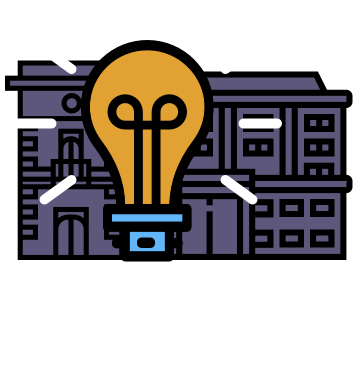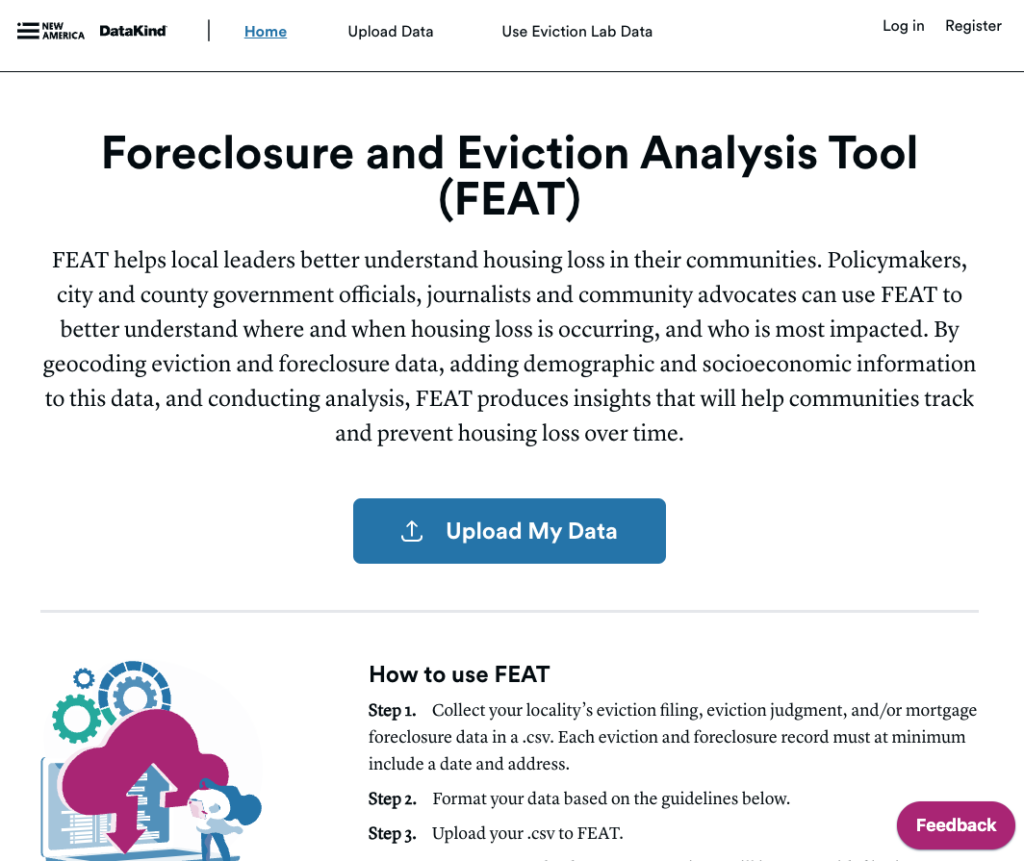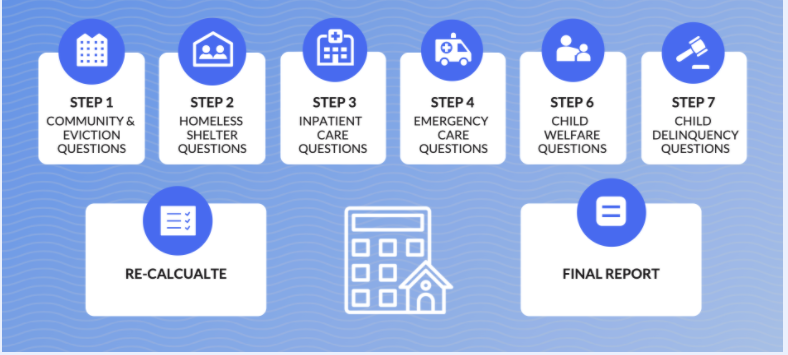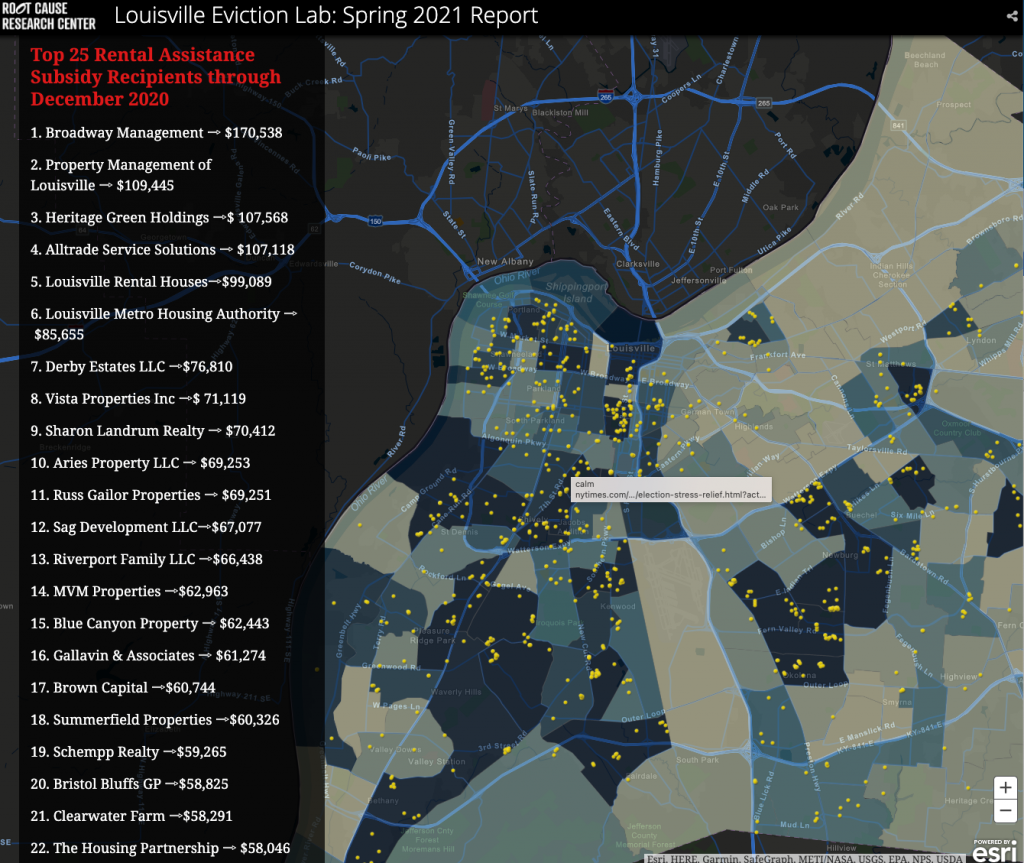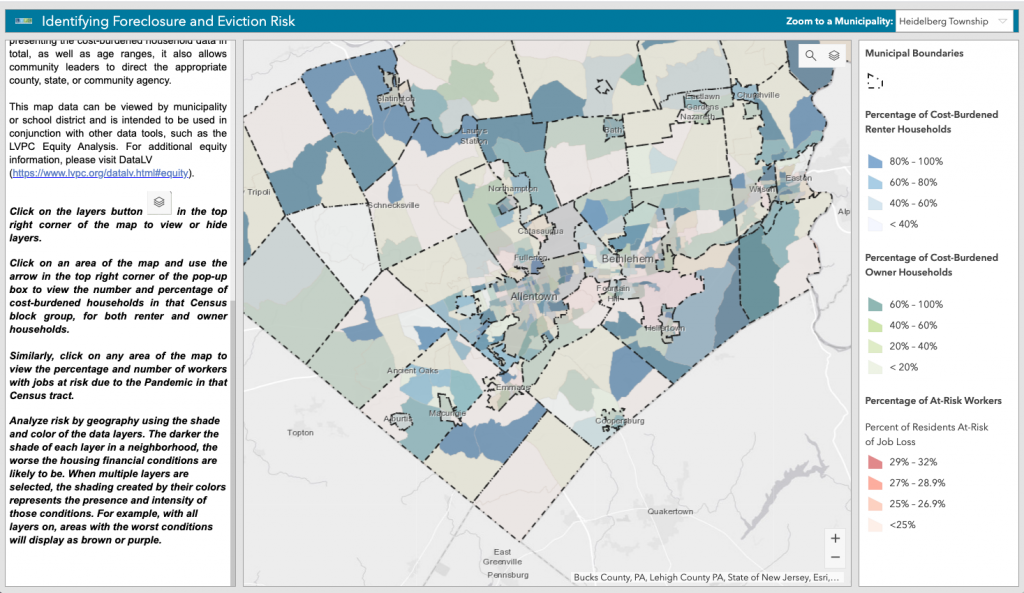Are you looking for detailed information about housing, evictions, and court filings? Explore this guide to national, statewide, and local eviction data sources. The page includes data about who is at risk of eviction, lawsuits being filed to evict people, and housing dynamics that can lead to evictions.
- National Data on Eviction Risk, Lawsuits, and Dynamics
- Eviction Lab data on US court eviction filings
- Eviction Tracker from Legal Services Corporation
- Foreclosure and Eviction Analysis Tool (FEAT)
- Housing Precarity Risk Map
- Eviction Laws policy map
- Open Eviction Data and Tool Finder
- Cost of Eviction Calculator
- Other national datasets and tools around eviction and housing
- Local Eviction Data
- Building Better Eviction Data Systems
National Data on Eviction Risk, Lawsuits, and Dynamics
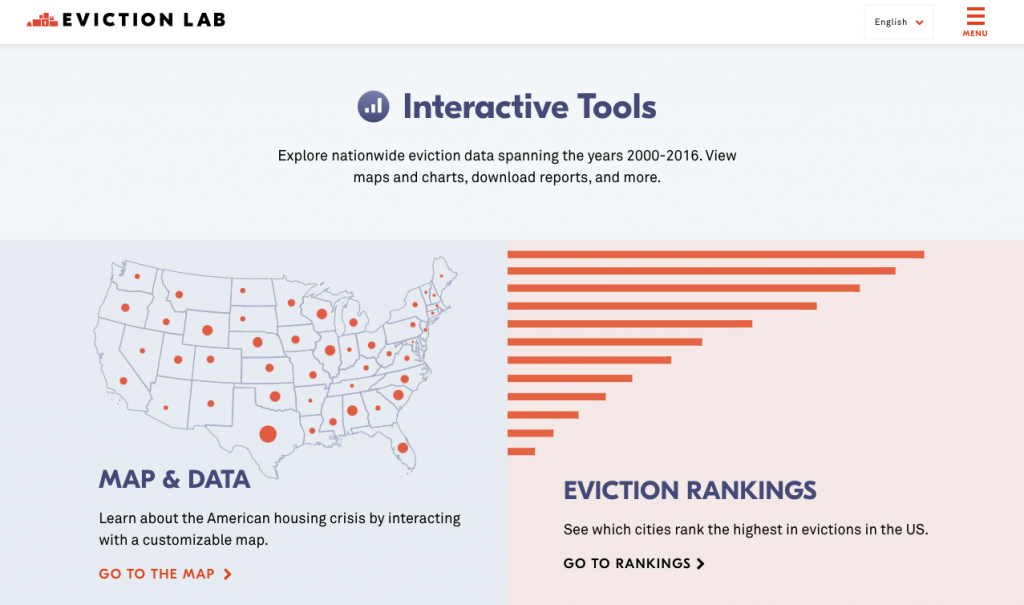
Eviction Lab data on US court eviction filings
Princeton Eviction Lab’s Court Filing data repository has raw data, map visualizations, and ranking tables to explore.
The Eviction Lab also has an in-depth tracker of some counties’ and cities’ eviction case filings & outcomes: https://evictionlab.org/eviction-tracking/
Eviction Tracker from Legal Services Corporation
The Legal Services Corporation’s Civil Court Data Initiative has an Eviction Tracker that presents what is happening in local county and municipal courts, when it comes to eviction filings and case proceedings.
See the Tracker at https://civilcourtdata.lsc.gov/data/eviction
Foreclosure and Eviction Analysis Tool (FEAT)
New America & DataKind have an interactive data tool for local civic and court leaders to make better policies around evictions and foreclosures.
The FEAT tool lets them upload local eviction court data or foreclosure data. It then spotlights insights policymakers can take away about future housing loss and impacts on particular groups.
Try out the tool here: https://www.featapp.org/
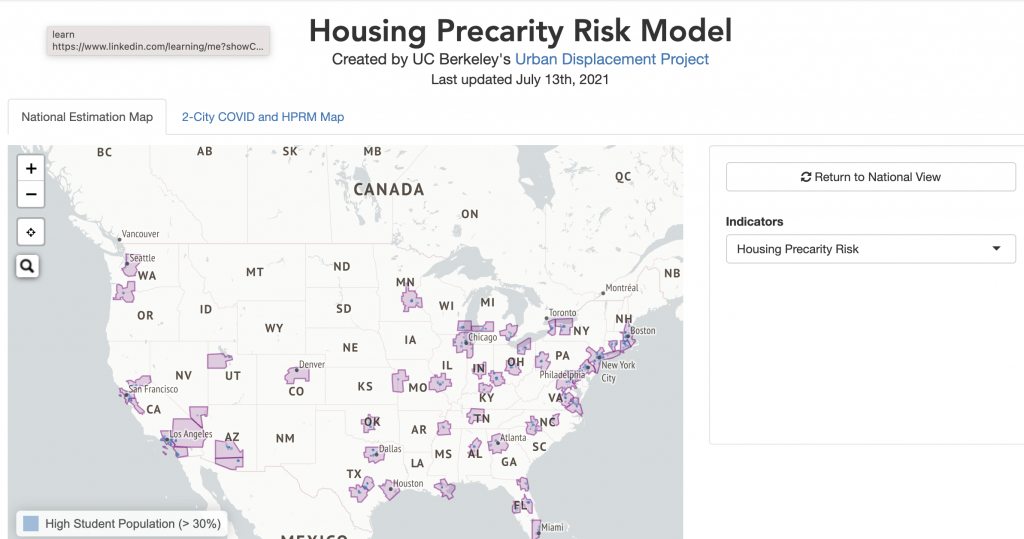
Housing Precarity Risk Map
The University of California Berkeley’s Urban Displacement Project has an interactive map of different kinds of housing instability, or precarity, risk around the US.
Eviction Laws policy map
The Legal Services Corporation worked with the Law Atlas group at Temple University to make a 50-state index of landlord-tenant and eviction laws.
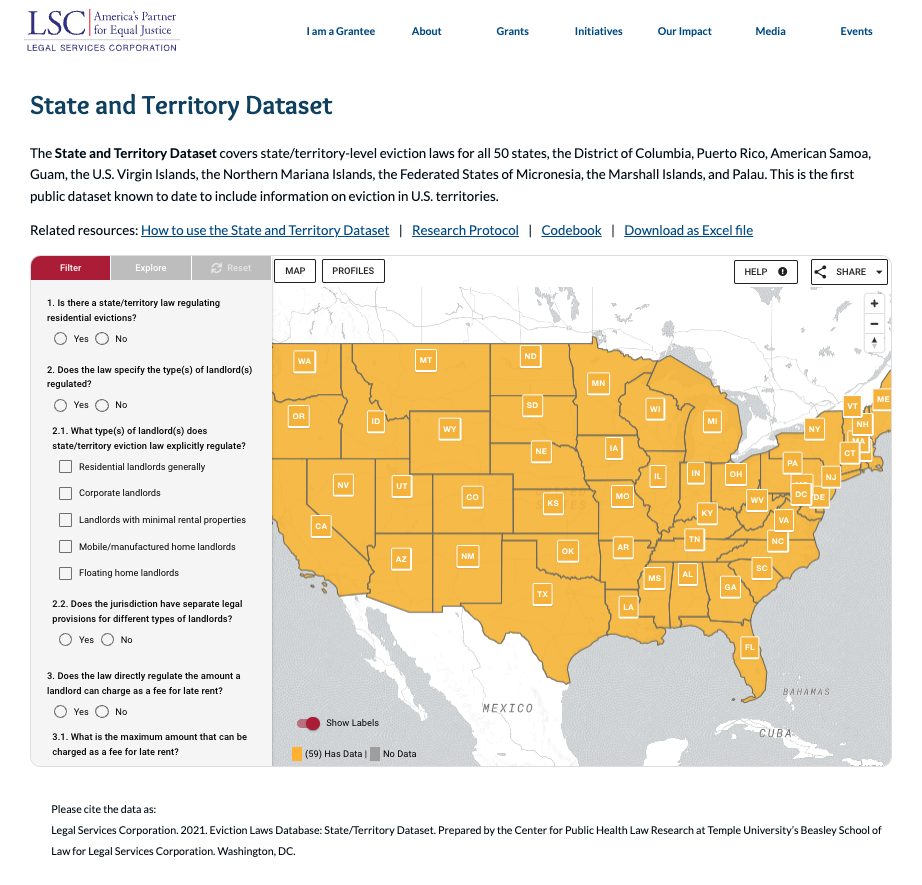
Every jurisdiction may have different rules about:
- when landlords may evict a tenant
- how tenants can challenge an illegal eviction, like a lockout, harassment, or utility shutoff
- the warning and notice timeline, requirements, and steps a landlord must take
- how to file an eviction lawsuit, what steps to follow, and the timing of it — including how to make a claim for the tenant to leave the tenant to leave the home, and how to claim for money a landlord thinks the tenant owes
- what defenses and counterclaims a tenant may use to stop the eviction, reduce the money they owe, or ask for money from the landlord
- how eviction hearings are conducted, and if/how appeals are allowed
- whether eviction filings are public records, and how they may be masked or sealed to protect litigants from collateral consequences
- how court judgments then are processed and used by landlords, sheriffs, or others to remove people from their homes
This policy map provides an overview of this legal data about eviction rules and processes.
It was last updated in 2021.
Open Eviction Data and Tool Finder
The Open Eviction Data and Tool Resource is a repository of eviction data and tools available that are available to the public. This is an ongoing effort and will be updated automatically with new submissions. If you have any suggestions of data sources or examples to include, please submit them here or use the form below.
How do I use the Open Eviction Data and Tool Finder?
Use the table below, which is categorized into different themes.
You can filter for tools or data sets, resources related to data collection, analysis or strategy, difficulty level and much more.
Feel free to play around with the tool to find the resource you are looking for!
Contribute to the Open Eviction Data and Tool Finder
Fill out this form below if you want to submit a data set or a tool to the Open Eviction Data and Tool Resource and help other cities and organizations gain more access to tools and data that assist with eviction prevention.
Cost of Eviction Calculator
What does an eviction cost taxpayers and communities? This tool from the University of Arizona can help you calculate what evictions are costing the region, because of additional services and harms to be dealt with.
Local Eviction Data
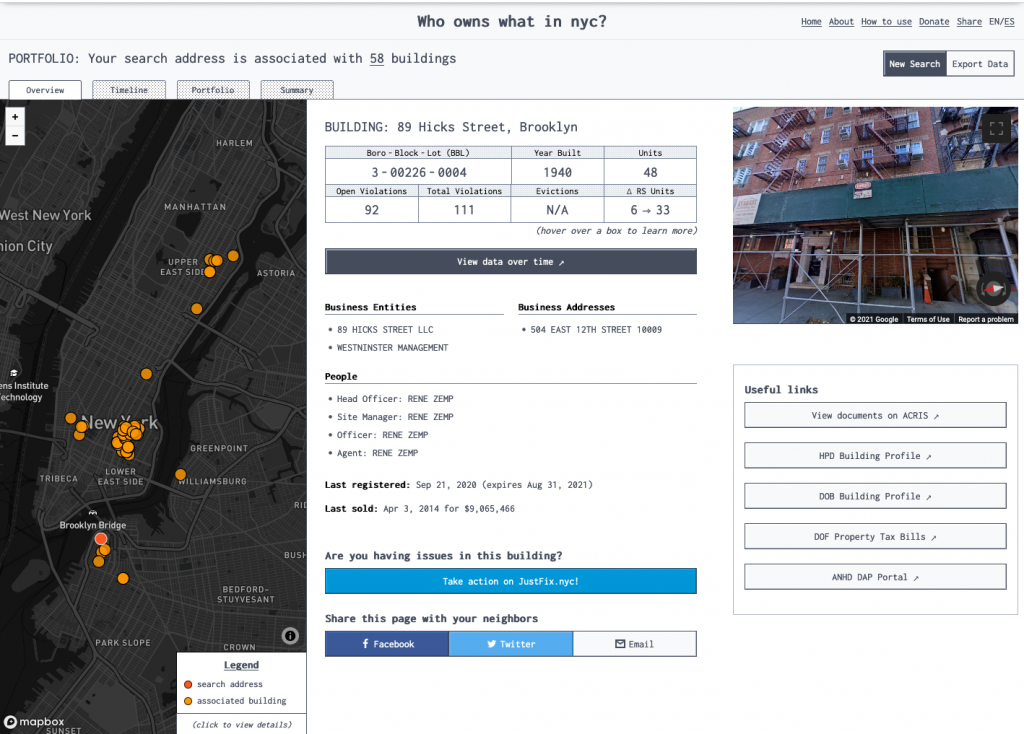
Who owns what? database in NYC
This coordinated and visualized dataset from NYC lets anyone see who owns what building, how many violations are open in that building, how many evictions they have filed, what a building’s owner also owns across the city — to better be able to understand the dynamics of the eviction & the profiles of common landlords.
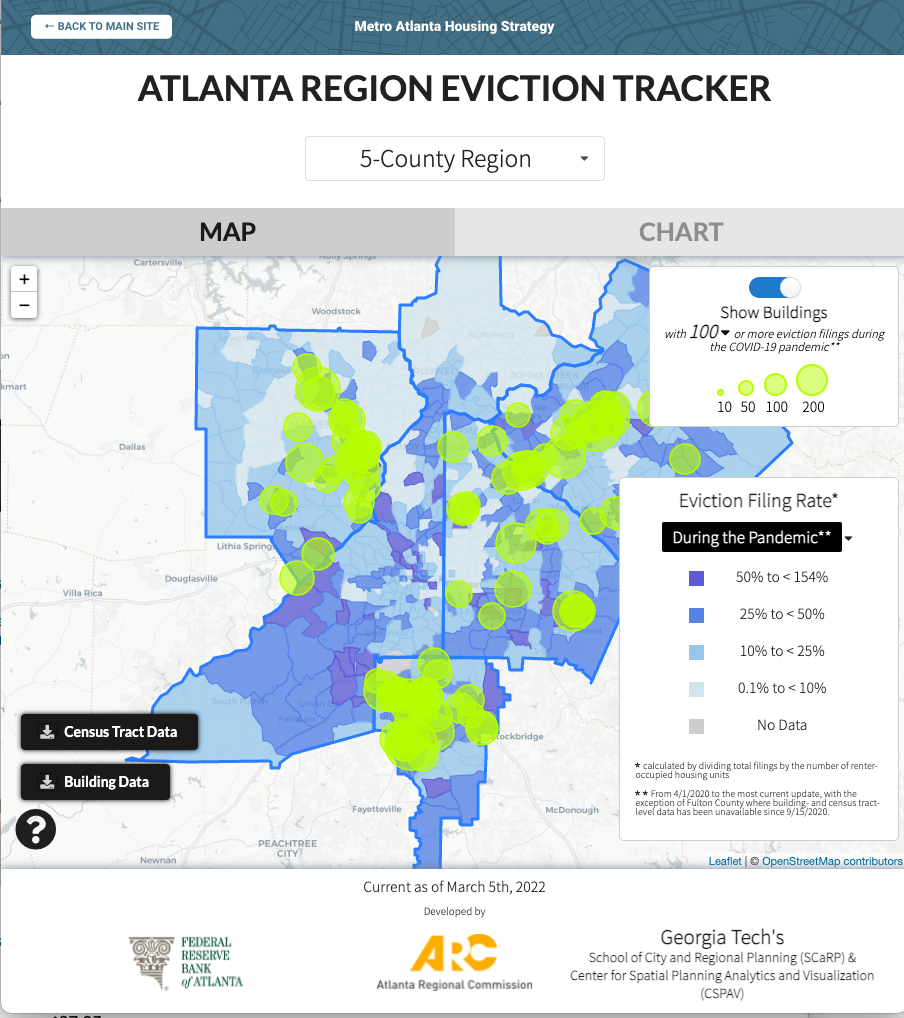
Atlanta Region Eviction Tracker
A local coalition in Georgia has built a live eviction court case tracker to see what is happening with eviction court case trends in the 5-county Atlanta region.

Virginia & Richmond city eviction data and mapping
The RVA Eviction Lab has a website rich with reports, datasets, and maps of eviction statistics from Richmond and across the Commonwealth of Virginia.
Louisville Eviction Lab data
The Louisville Eviction Lab has data mapping out what is happening with housing, landlords, rental assistance, and evictions in the Kentucky city.
It maps out:
- where eviction judgments are happening
- which landlords are frequent eviction filers
- which landlords and management groups are getting how much rental assistance
- how many people different landlords are evicting
- how housing authorities are behaving around eviction
Pennsylvania Eviciton Risk Maps
The Lehigh Valley Planning Commission has mapped eviction & foreclosure risk in local townships of this Pennsylvania region. The map spotlights local tracts that have high rent-burdened homes, cost-burdened owner households, and residents at risk of job loss.
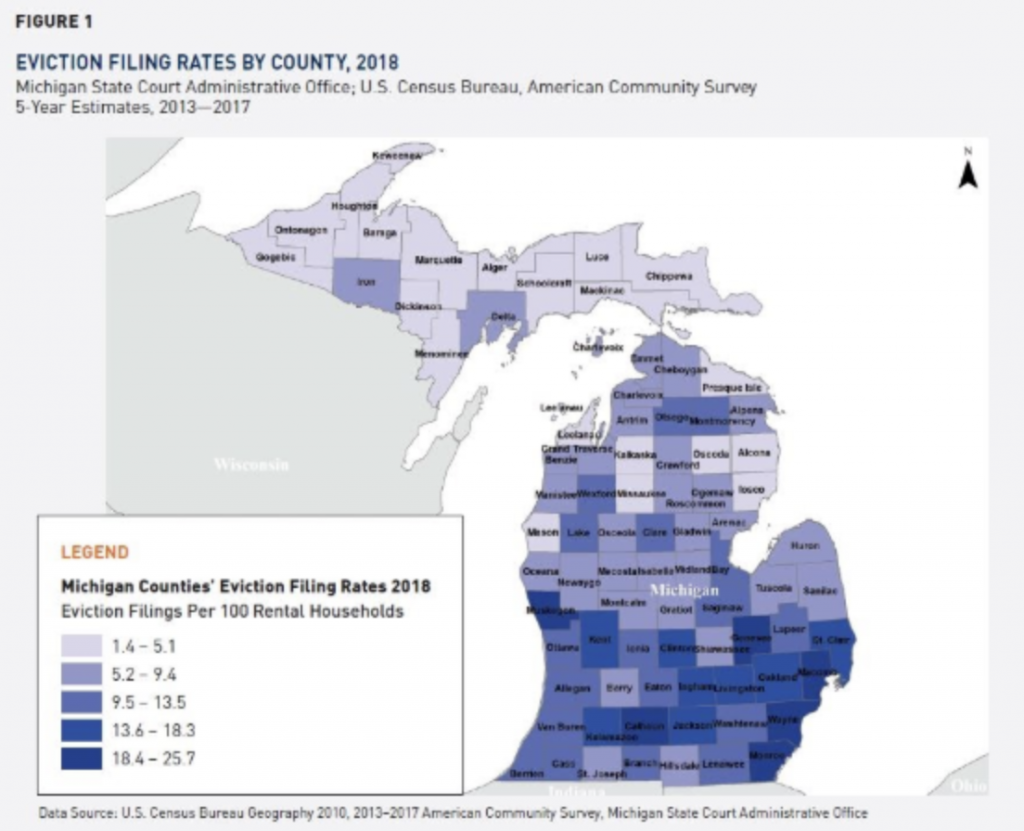
Michigan Eviction data
The University of Michigan team at the Poverty Solutions Group has a 2020 report, map, and dataset on eviction filings across the state of Michigan.
More local eviction data & dashboards
- Indianapolis: https://www.savi.org/follow-the-money-indianapolis-evictions-in-2022/
- Chicago: https://eviction.lcbh.org/data
- Atlanta: https://metroatlhousing.org/atlanta-region-eviction-tracker/
- Alexandria: https://public.tableau.com/app/profile/katherine.key2321/viz/AlexandriaVAEvictionTrends/SummaryDashboard
- Philadelphia (Pew report): https://www.pewtrusts.org/en/research-and-analysis/articles/2022/11/02/eviction-court-outcomes-in-philadelphia-differ-by-type-of-landlord
- Harris County (Houston): https://www.januaryadvisors.com/evictions/
- Hennepin County (Minneapolis) : https://app.powerbigov.us/view?r=eyJrIjoiYzQ1NDQyYzUtZDY2Zi00OTIxLThiZDgtZGQ3MWYwZjM5NmQ0IiwidCI6IjhhZWZkZjlmLTg3ODAtNDZiZi04ZmI3LTRjOTI0NjUzYThiZSJ9
- Detroit: https://www.evictionmachine.org/data-tools/geography/eviction-machine
- San Francisco Eviction Notices https://data.sfgov.org/Housing-and-Buildings/Eviction-Notices/5cei-gny5
- Carnegie Mellon University’s CREATE Lab (Pittsburgh & Allegheny County) https://www.scs.cmu.edu/news/2020/beyond-data
- Allegheny County Eviction analytics for the Pittsburgh,PA area
- SLC Renters Together (ERA Distribution) https://experience.arcgis.com/experience/285c8572fddd41a7b2221e731bf23ace/
- MOH’s Center for Housing Data (Boston) https://www.mhp.net/news/2021/housing-stability-brief
- Housing Data NYC https://www.housingdatanyc.org/
- Milwaukee Eviction Tracker https://mke-evict.com/sda
- Right to Counsel NYC Coalition Eviction Crisis Monitor https://www.righttocounselnyc.org/evictioncrisismonitor
State Eviction Data
- Connecticut eviction filings https://data.ct.gov/w/j5dt-tcp7/wqz6-rhce?cur=Xt6gCDKhieu&from=root
- Oklahoma Court Tracker https://openjustice.okpolicy.org/blog/oklahoma-court-tracker/
- Virginia Eviction Tracker https://www.justice4all.org/virginia-eviction-tracker/
- Community Justice Project Florida Housing Data Clearinghouse http://communityjusticeproject.com/evictiondata
- Maryland Courts Housing Data Dashboard https://public.tableau.com/app/profile/yates.bi.consulting/viz/HousingDashboardJul10/HousingDashboard
- Indiana: https://storymaps.arcgis.com/collections/cb395c1ffe0a454d84c530a797aa0201?item=1
Research reports using eviction data
- UNC Greensboro https://chcs.uncg.edu/wp-content/uploads/2017/07/Evictions-DRAFT-7-25-2017-SILLS.pdf
- 2019 State of the City Eviction Filing NYC https://furmancenter.org/stateofthecity/view/eviction-filings
- Michigan evictions: https://poverty.umich.edu/research-funding-opportunities/data-tools/michigan-evictions/
Building Better Eviction Data Systems
Our team at the Stanford Legal Design Lab has worked with a group of stakeholders to draft 8 Recommendations for Creating Local and National Eviction Data Systems.
This has been co-developed and co-signed by Beeck Center for Social Impact + Innovation, the Eviction Lab, Georgetown’s Civil Justice Data Commons, January Advisors, National League of Cities, National Low Income Housing Coalition, New America, Stanford Law School Legal Design Lab, UNC Greensboro Center for Housing and Community Studies.
These recommendations are part of a longer report titled “Why is Eviction Data so Bad?”

What data should agencies be collecting about evictions?
From our work with jurisdictions across the country, we have identified some key data points to know about how the eviction system works, who is affected, and what outcomes result.
If you are a court, social services agency, government body, or other group working in housing — these are data categories you should collect & analyze.
Court data on eviction lawsuits
Government and civil sector leaders should know key what the numbers are, regarding official, legal eviction actions. How many evictions are going through a legal process? What are the court outcomes? Who is in the system?
- Court Eviction Filing numbers and percentage/rate, and how it changes over the years .
- Estimated informal eviction numbers, that are not going through the courts but are resulting in forced displacement from a home
- Landlord win percentage in court cases.
- Default percentage: How many cases are resolved without the tenant appearing in court? Where the plaintiff landlord ‘wins’ by default?
- Percentage of filing for non-payment, lease violations, other reasons
- Percentage of landlord types who have filed
- Amount of unpaid rent that eviction is filed over, how many months in arrears
Use of Legal Services in Evictions
- How many tenants appear in court without a lawyer?
- How many tenants are reaching out to legal aid groups or self-help centers to get brief advice, or full legal representation?
- What are the different court outcomes and housing outcomes for tenants who have gotten legal services?
Demographics & Locations of evictions
- Demographic groups who face eviction most – race, gender, children
- Geographic areas which have the highest eviction rates
Landlord details
- Landlords who have filed most, serial evictors and their characteristics
- Overall landlord types and locations (not just those filing evictions)
- Landlords with habitability or living conditions concerns
Outcomes for people involved
- How many of the eviction judgments result in set-outs or forceful removals involving law enforcement?
- What is the housing stability or rate of homelessness of people who have been through an eviction lawsuit?
- Do the children involved in the eviction change schools? What are their educational outcomes after the eviction?
- Do the landlords file for eviction again, with this tenant or others?

The Eviction Data Gap
The group New America, in partnership with the National League of Cities and others, have documented the Data Gap that exists around the eviction system in this February 2021 article by Yuliya Panfil and Lauren Lowery: https://www.bloomberg.com/news/articles/2021-02-03/why-is-it-so-hard-to-collect-good-eviction-data
